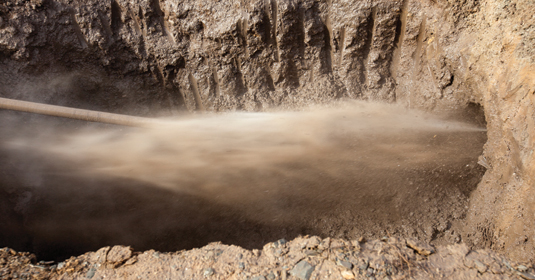And yet less changed, it seems, than most other oil and gas standbys. Drilling fluid remains a constant in an ever-changing industry.
In an industry which is known for rapid, constant change, particularly in recent years, one field has remained unchanged in essentials for decades. While the industry changes around them, drilling fluids manufacturers continue to create products for the same task they were doing 25 years ago, increasing their effectiveness steadily by degrees.
Ken Goldsmith, a drilling fluid manufacturer based in Midland, Texas, stated, “Since I entered the drilling mud industry in 1980, there have always been ambitious inventors, scientists, and entrepreneurs who have attempted, with limited success, to develop breakthrough ‘products’ that were going to revolutionize the drilling industry. We’ve proved a significant reduction in drilling days with selective and proper usage of certain drilling lubricants, but, generally speaking, mud is still mud in this region.”
Drilling fluids, often referred to as “mud,” serve several purposes in drilling. Muds are either water- or oil-based, depending on the field and the kind of drilling being done. The base is then infused with an assortment of additives. These additives regulate the fluid’s viscosity and density, serve as lubricants for the drilling apparatus, and balance the pH level, among other things. As Rick Rippy of Nova Mud Inc., a drilling fluid company based in Hobbs, N.M., explained, “Texas is different from New Mexico, and East Texas is completely different geologically from New Mexico…. West Texas is hard rock country, and you can drill to 10,000 feet on water. In the east it’s softer formations near the gulf. They have different challenges, which makes a large difference in what types of fluids are being run. They are basically the same, but there are differences.”
The kind of additives used depends in part on the status of groundwater and geological formations in the region being drilled. Mud is used to fill the bore while the well is being drilled in order to keep local groundwater from flooding the bore. To this end, the viscosity of the mud has to be adapted to each formation.
Rippy pointed out that drilling fluid is also used to maintain well stability, ensuring that the diameter of the bore remains consistent by filling irregularities. Goldsmith indicated another aspect which affects the kind of mud used: “We have seen an increase in the usage of oil-based mud with the increase in horizontal drilling activity, although there has not been a breakthrough product in drilling mud, at least for the Permian Basin region, which has revolutionized the drilling industry.”
In the Permian Basin, the growing trend of horizontal drilling is causing drilling fluid companies to readjust business models and equipment. Goldsmith remarked: “The increase in demand for oil-based mud has caused operators to start looking closer at costs of transportation and time required to get mud on location. Operators are also looking for ways to reduce waste and spillage, and reduce cleanup costs of oil mud, which is more costly and can be more damaging to the environment if not handled properly.”
Companies like Mudsmith are, therefore, adapting their production and the equipment they offer to a field which relies more and more on oil-based mud. Rippy indicated that controlling torque is a major concern in horizontal drilling, and while agreeing with Goldsmith that there have been no major breakthroughs in this area, he stated, “Lubricants that have been developed have moved forward some, helping operators with horizontal drilling have fewer issues with torque, in both water-based and oil-based mud.”
According to both Rippy and Goldsmith, the primary changes that they are experiencing, and that they expect to continue, involve business more than technology. Both indicated that they are always working to increase efficiency and optimize drilling speed.
Regarding future plans, Rippy said he expects to “expand our operations area of concern, and look for new areas to work in for oil companies… Look for better products. If we don’t have what a customer is looking for, we attempt to find something that may be better for our company and for the oil company.”
Beyond continued efforts to adapt to rising demand for oil-based mud, Goldsmith is taking a few factors into account. He noted that in the Permian Basin, many independent mud companies are merging with, or selling to, larger companies. He went on to say, “We’ve also seen some interest, on the part of local independent operators, to switch over to Mudsmith, since we’re still a locally owned service company.”
For the time being, the increased rate of drilling in West Texas is helping drilling fluid companies, but Goldsmith suggested that this trend may not continue. “It seems that operators may be gravitating away from using mud in lieu of casing on Wolfberry wells. As operators return to running intermediate casing in these [Wolfberry] wells, mud usage will be significantly reduced.”
While drilling fluids producers benefit from a rapidly growing oil industry, their task and technology remain essentially unchanged. Rippy concludes: “We are always striving to find a better way to make mud additives and improve bore stability and penetration rates…. Time is money. If you get in there and do something wrong and lose time, it costs money…. We have a plotted course of action when we start a well and depths are set, operations continue, and our objective is to get to our total depth without any kind of well-bore issue.”
In Goldsmith’s words, “Mud is
still mud.”










